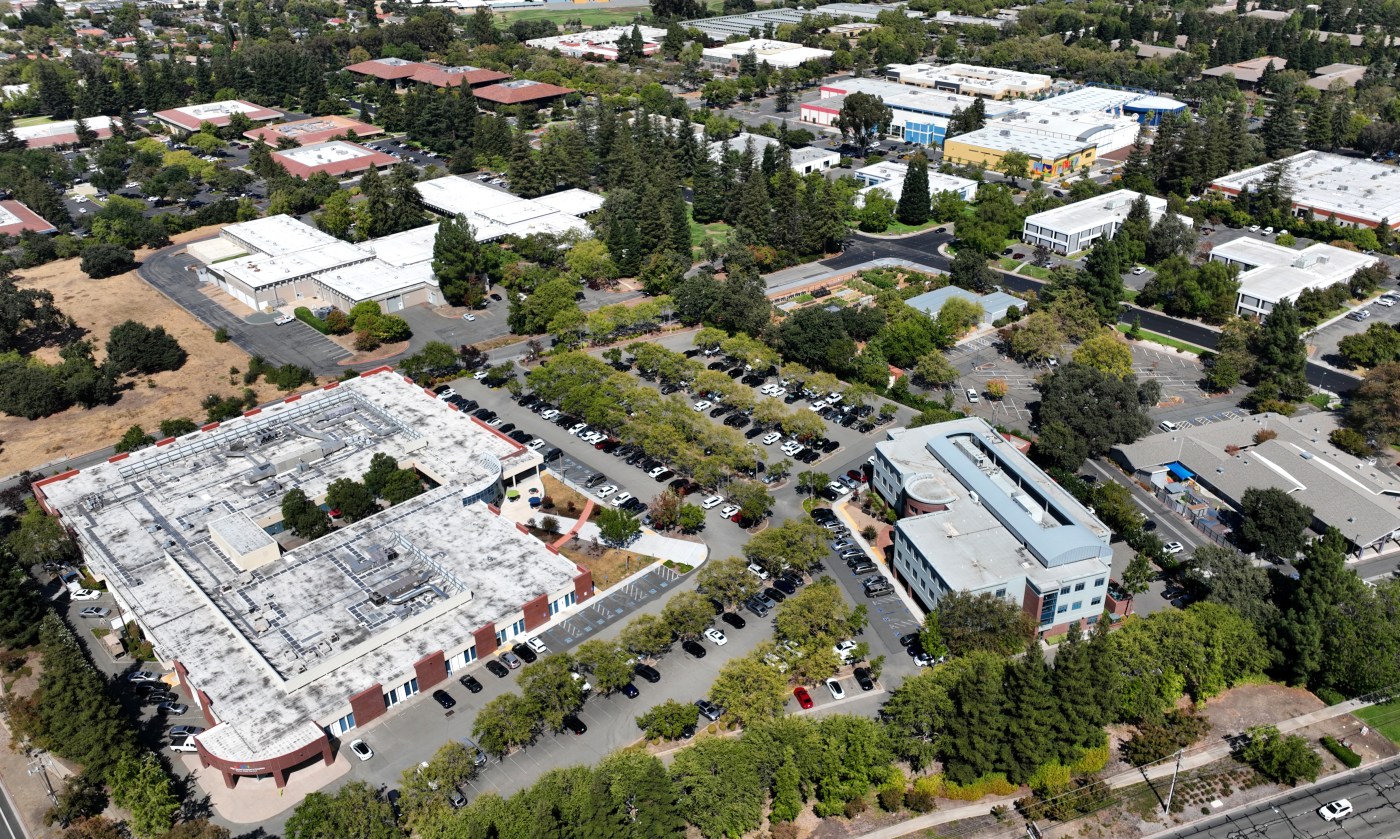WALNUT CREEK — The Shadelands business district has been a work in progress for years, including a 2016 zoning facelift that quickly helped infuse life back into the site with a state-of-the-art sports facility, skilled nursing center and revamped development plan.
But property and business owners with a stake in the future success of the 1970s-era office park are now waging a million-dollar marketing campaign to entice what they hope will be the next generation of tenants and customers: families and seniors looking for a place to “work, live and play” in Walnut Creek.
For the past decade, city leaders have studied the best way to invigorate the sprawling 270-acre office park located between Oak Grove Road, Ygnacio Valley Road, Lennon Lane and the Contra Costa Trail — a site dominated by a sea of commercial buildings, many of which have been plagued by vacancies in recent years.
Bob Linscheid, president and CEO of the city’s Chamber of Commerce, which is contracted to manage the Shadelands district and coordinate the Shadelands Property and Business Improvement District Steering Committee, said the district was formed in 2014 to lead a rebranding effort after chronic vacancies. The district, which was renewed for a 10-year term in 2020, boasts 3.4 million square-feet of space — currently home to 106 property owners and 300 businesses.
The district reports that between 2014 and 2018, Shadelands reduced vacancies from 40% to 13%. By October 2020, that rate hovered around 15%, but creeped up to 19% by the end of 2022.
Linscheid said the Shadelands is still struggling with vacancies, but strides are being made to continue expanding medical and health care services in the area — a benefit to seniors and families.
While presenting the district’s annual report for fiscal year 2023-24 to the City Council last week, Linscheid said the goal is to develop a “modern and dynamic” mixed-use business and lifestyle destination — a vision illustrated in ads recently plastered across BART station billboards, the development’s new website and social media feeds.
“In collaboration, the property owners, tenants and city staff are all rowing in the same direction, as some would say, along with some creativity in light of the challenges we all face,” Linscheid said last week. “The mission and purpose of the district is to promote the Shadelands, attract diverse and innovative businesses, enhance property values and enrich quality of life for the community and region.”
Related Articles
Lender seizes East Bay apartment complex as real estate market falters
Cisco will shift units from north San Jose and San Francisco to Santana Row
Livermore land sold for $40 million-plus, tech project eyed
San Jose final goal for blighted vacant lot: sell ‘nuisance’ property
Big Santa Clara tech campus is bought for more than $50 million
Looking forward to 2029, the improvement plan notably has dropped “the” and “business park” from the property’s name — echoing plans to build additional housing within Shadelands.
One such project is Mitchell Townhomes, a sizable residential development slated for land along Mitchell Drive and Oak Grove Road.
Seeking approval under the builder’s remedy and other recent state housing laws, the project currently proposes demolishing 11 existing office buildings in order to construct 422 condo-style townhouses, including 85 units set aside for low-income households.
Ranging from 1,270- to 2,067-square-feet, initial planning records show that the proposed units would be built across 83 buildings, ranging from a 2-plex to 6-plex design. Each unit would include a two-car garage, alongside other guest parking.
A drone view of the proposed Mitchell Townhomes site in Walnut Creek, Calif., on Thursday, Sept. 19, 2024. The existing 11 office buildings will be demolished to construct 422 townhouses of which 20% will be set aside for low-income households. (Jane Tyska/Bay Area News Group)
Additionally, Linscheid pointed to the Route 7 shuttle, which loops passengers around Shadelands and the Pleasant Hill BART station. Since 2015, the transit line has provided service to over 650,000 passengers and traveled about 2 million miles, which he said is “equivalent to four round trips to the moon.”
By redefining Shadeland’s identity to include these types of new housing options, transportation routes, business opportunities and wellness resources, the district’s annual report said the importance of this rebranding effort “cannot be overstated.”
All of this work is paid by district funds generated by county property assessments, which Linscheid said collects about $400,000 a year. After money started trickling in during 2020, he said they have “accumulated quite a fund balance,” which was $1.3 million by June 30, according to the annual report.
Councilmember Cindy Silva said at last week’s meeting that she was pleased with the Shadelands’ progress over the last decade.
“It’s very exciting to see the transition,” she said.












